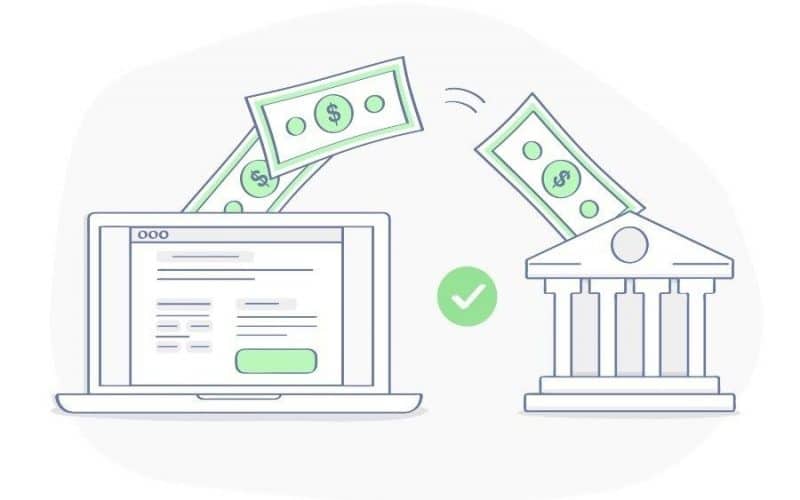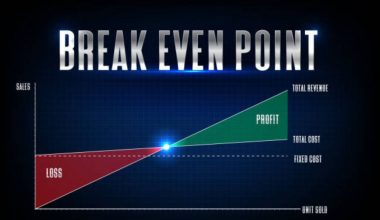You won’t need to deposit a paper check every pay period thanks to direct deposit, which enables your employer to transfer your payments directly to your bank account. Paper paychecks are virtually a thing of the past thanks to the predominance of direct deposit; according to a 2020 American Payroll Association study, 94 percent of respondents were paid via direct deposits. Although convenience may be the primary benefit of direct deposits, many banks also offer additional perks to clients who receive their paychecks in this manner. These perks may enable you to save money and even receive your money sooner. How direct deposits work and the difference between direct deposit and wire transfer will be explained in this post.
What is Direct Deposit (DD)?
Direct deposit is the phrase used to describe the electronic deposit of funds into a bank account as opposed to a physical, paper check. Utilizing an electronic network that enables deposits to be made between banks is necessary for direct deposits. The Automated Clearing House (ACH) network is the name of this system. There is no need to wait for the money to clear because electronic cash transfers automatically credit recipients’ accounts. Paychecks, tax refunds, and other perks are frequently deposited using direct deposits.
How Does Direct Deposit Work
Here’s how the direct deposit distribution process works:
A secure and practical method of payment is direct deposit. Through an electronic network, funds are directly deposited into the account of the recipient. The recipient must give the person or company making the deposit the name of their bank, their account number, and the bank’s routing number for the monies to be transferred from the payer. An alternative would be to receive a voided check with the same information via direct deposit.
Setting up a direct deposit can take a few days. The depositor enters the data into their banking system once they have it. At midnight on the payment date, funds are electronically transferred and deposited into the recipient’s account. The bank doesn’t need to put a hold on the funds because they clear automatically through the ACH and are available right away.
Salary transfers, tax refunds, investment redemptions, retirement account payments, and government benefits like Social Security are all regularly made via this technique. Direct deposits from debtors to creditors can also be used to settle bills. The government can make the return instantly available to the citizen by using direct deposits. The same holds for public assistance programs like Social Security.
While automated clearing houses and bank accounts are typically used for direct deposits, these payments can also be made through online banking and mobile transfers. For instance, all that is required is the recipient’s email address or mobile number to send money immediately to a family member. The transfer company receives the recipient’s banking information. Once sent, the money is deposited into the recipient’s account. The funds are immediately usable, as is the case with other direct deposit situations.
How Long Does Direct Deposit Distribution Take?
Direct deposits often take 1-3 days to clear. That takes much less time than a check.
Although the actual transfer of money happens almost instantly, your bank may need a few days to confirm the transaction and make the money available to you. Weekends and federal holidays, among other things, can make this procedure take longer.
Employers occasionally incorporate this timeline into their payroll software so that you receive your deposit the day you are supposed to be paid rather than three days later. Normally, you can withdraw the money the same day it appears in your account, but occasionally, you could not have access to it until the next working day.
Direct Deposit Vs Wire Transfer
EFTs come in a wide variety of types. Direct deposit and wire transfer are two of the most often used electronic transaction types. When transferring money electronically, it’s crucial to comprehend the distinctions between these transfer methods to avoid making mistakes. What distinguishes wire transfer vs. direct deposit, then? With the help of our helpful guide, we’ll go into more detail about direct deposit vs. wire transfer.
Direct deposit?
A kind of money transfer called direct deposit involves an automatic transfer of funds to your account. Employers prefer this method of payment because it allows payees to get funds more quickly and avoids the trouble of handling physical checks. A direct deposit does have certain other uses, such as tax refunds.
What is a wire transfer?
Given that you have a firm grasp of direct deposits, let’s move on to wire transfers. In essence, a wire transfer is a type of money transfer that enables electronic money transfers. You can send money fast and securely with a wire transfer by using networks like Fedwire or SWIFT (a network of correspondent banks that cooperate to transport your payments from one location to another).
There are a few important things to consider while deciding between direct deposit vs. wire transfer. The transaction’s quickness is the first consideration. Wire transfers are quicker and you should receive your money in a few hours at most, but it’s frequently instantaneous. Direct deposits are speedy and should see you receive your money within one working day.
Currency is yet another crucial element. You can only accept payment through direct deposits in the local banking system’s currency. For instance, if you reside in Australia, you can only get money in Australian dollars (AUD), whereas people who reside in the United Kingdom can only receive payment in British pounds (GBP). In contrast, clients who use wire transfers can select a currency other than the local currency to be used as payment.
It’s also crucial to remember that wire transfers and direct deposits serve different purposes. In general, wire transfers are used for one-time (often significant) payments to another person or institution, whereas direct deposits are used for recurring payments like salary and payroll. As a result, the circumstances in which you’ll use these transfer methods may vary greatly.
Direct deposit or wire transfer each has different uses. Considering the needs of your business and the advantages and disadvantages of each payment option, you must select the best one.
How to Set Up Direct Deposit Distribution
Regardless of the payer, the procedure for setting up direct deposits is essentially the same. The steps you must take to receive your direct deposits payments are listed below:
#1. Fill out the direct deposit form.
You will need to fill out a direct deposit form that includes your name, address, Social Security number, and signature to authorize the direct deposits from your employer (or other payers).
#2. Include the details of your account.
Your bank or credit union account information, in addition to the data mentioned above, is the most crucial piece of information on the direct deposit form. Your employer will not be able to start the direct deposits unless you specifically supply your bank’s or credit union’s routing number and account number.
#3. Deposit amount.
The deposit usually matches the amount on your check. However, you might have the choice to deposit a portion into your checking account and a portion into your savings account, for instance with a paycheck.
#4. Attach a voided check or deposit slip.
Although your account information is typically listed on the direct deposits form, you may frequently need to enclose a voided check or deposit slip to make sure the payer is connecting to the right bank account.
#5. Submit the form.
A direct deposit form contains a lot of sensitive information, so it’s crucial to use caution when submitting the form. It’s a good idea to give this form directly to your payroll department if you work in a traditional office. Instead of sending the form via email when submitting it remotely, use a secure file transfer service.
Uses and Benefits of Direct Deposit
Direct deposits can be used for the following things in addition to payroll.
#1. Independent Contractors
A self-employed individual who completes “work for hire” for a client is known as an independent contractor. The client is not legally required to deduct taxes from the contractor’s pay because they are not an employer. In addition, rather than paying the contractor on a regular payroll schedule, the client pays the contractor when they receive an invoice.
Since 2013, beneficiaries only receive Social Security benefits through direct deposits. The Social Security Administration calculated that switching to a direct deposit system would save $120 million annually, amounting to $1 billion in savings for taxpayers over the previous ten years.
#3. Child Support
Receiving child support payments via direct deposit can be quick, easy, and safe. Parents who are ordered to pay child support by the court typically enroll in direct deposits through their state. There is no need to wait for paper checks to arrive in the mail with a direct deposit option, and there are no costs involved in getting paid. Since you can easily track and search for payments via your bank’s online portal when using direct deposits, it’s also simple to keep track of child support payments.
#4. Tax Refunds
According to the IRS, filing taxes electronically and choosing direct deposits are the quickest ways to get refunds. While paper checks can take much longer, more than 90% of refunds that include both an e-file and direct deposits are processed within 21 days. Additionally, the IRS will permit taxpayers to directly deposit their refunds into up to three different bank accounts, enabling you to easily transfer your money to the accounts you desire without having to lift a finger.
#5. Bill Payment
Rent and utility payments can both be made through direct deposits. Banking customers typically set up this type of direct deposit with their bank using the “bill pay” feature of the business. This is often the only way to set up such a direct deposit, since it may be difficult otherwise to get the direct banking information for your recurring bills.
Advantages of Direct Deposits
#1. Easier and faster transactions
With the direct deposit option available, transactions have gotten easier and faster. A direct deposit minimizes bank visits for both the payer and the payee. Funds transferred are usually available quickly or do not take a large amount of time to be processed.
Direct deposits are a more convenient and safer method of depositing funds, as they reduce the danger of theft or loss of a check or cash as the deposit is carried out electronically. The use of direct deposits also minimizes check fraud.
#2. More efficient payroll process
For businesses, the use of direct deposits eases the payroll process, as it allows for the prompt payment of salaries and/or wages, and it minimizes the bookkeeping effort since no delays of cash movements occur, and funds are delivered straight to the employee’s bank accounts.
Disadvantages of Direct Deposits
#1. Cybersecurity threats
One key risk associated with direct deposits is cybersecurity. Because payments are carried out electronically or online, they are susceptible to possible cybercrimes. However, banks and other financial institutions take measures to ensure safety and data protection at all times.
#2. Bank account necessary
Another disadvantage of direct deposits is the fact that the service cannot accommodate individuals without bank accounts. In circumstances where the beneficiary does not utilize a bank account, an alternate payment mechanism must be discovered and agreed upon.
What is direct deposit for example?
One type of direct deposit is payroll payments. On payday, employers can deposit money directly into their workers’ bank accounts without having to wait or worry about checks getting lost in the mail.
How can I make a direct deposit?
Direct deposits setup instructions:
- Fill out the direct deposit form.
- Include your account information.
- Deposit amount.
- Attach a voided check or deposit slip.
- Submit the form.
Is direct deposit a bank transfer?
Direct deposit, as the name implies, uses the ACH network to electronically transfer funds from one bank account to another. You don’t need to use conventional paper checks to complete this transfer; you can do it electronically.
What apps can I use for direct deposit?
Software for payroll with direct deposit:
- Proliant.
- PrimePay.
- Gusto.
- BambooHR.
- SurePayroll.
- Rippling.
- OnPay.
- Deel.
Can I do direct deposit online?
Yes. Direct deposit setup is simple. You should check with the payroll department of your workplace to see if you may set up your direct deposit through an Internet portal.
Can I get direct deposit without a bank account?
Yes. Prepaid cards are the simplest way to get a direct transfer without a bank account. Any bank will let you purchase a prepaid card even if you don’t have an account there.
Can you open a direct deposit account?
Yes. Direct deposit setup is incredibly simple because of the pre-filled forms that many banks and other financial institutions provide through Internet banking.
What banks send direct deposits?
- Bank of America
- Capital One
- Chase Chime®
Conclusion
Setting up direct deposit is normally uncomplicated, and it can save you the trouble of collecting a check every payday and depositing it in the bank. In addition to its being quick and simple, a direct deposit may come with incentives from your bank such as an early deposit, split deposit, and discounted monthly maintenance fees.
Related Articles
- HOW TO WIRE TRANSFER MONEY: Procedures For Wire Transfer
- HOW TO DO A WIRE TRANSFER: Detailed Guide
- DOMESTIC WIRE TRANSFER: How It Works
- HOW TO WIRE MONEY: Procedures for Wire Transfer
- HOW DOES DIRECT DEPOSIT WORK? All You Need To Know






